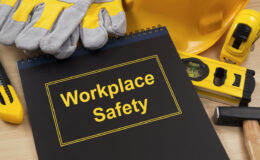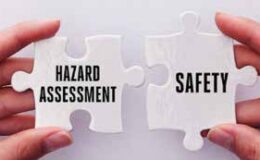By Travis Halsted, Loss Control Consultant
Year after year, motor vehicle accidents are at the top of the list for causes of workplace fatalities. Whether it is delivery drivers dropping off products to customers, the sales department visiting customers, the maintenance department running for parts, or office personnel completing different errands, there are often numerous members of your company on the road. Roadway exposures often contain some of the highest number of variables, as you cannot control a great deal of the residual risks of this hazard. According to the National Highway Traffic Safety Administration, there were an estimated 6.3 million police-reported car accidents in the United States in 2015. Motor vehicle crashes are the leading cause of workplace injuries according to the Bureau of Labor Statistics. In 2013, motor vehicle incidents contributed to 40% of all workplace fatalities. MTMIC has had 97 motor vehicle collision claims since the 2011 policy year. These claims has resulted in an incurred sum of $1.8 million. As most companies can’t eliminate the need for the use of the roads, we need to identify where the exposures come from and how to reduce the likelihood of those motor vehicle claims.
What Are Some of the Contributing Factors to These Statistics?
As roadway exposures have a high level of inherent risk, it can often be difficult to pinpoint the actual root cause and long term remedy to this type of hazard. Even though you may verify that your employee has a valid drivers’ license and their personal or company vehicle is road worthy, once they enter the roadway, they are often met with distracted drivers and adverse weather conditions. While defensive driving techniques and training on how to drive in adverse weather conditions may reduce those hazards, there is one part of roadway exposures that is often overlooked. This common and unsafe act is the growing action that is known as “road rage”.
What is Road Rage?
Road rage has been defined by The National Highway Traffic Safety Administration as when a driver “commits moving traffic offenses so as to endanger other persons or property; an assault with a motor vehicle or other dangerous weapon by the operator or passenger of one motor vehicle on the operator or passengers of another motor vehicle”.
Road rage is defined differently from aggressive driving by making the point that road rage involves using a vehicle in a way that endangers other individuals on purpose.
Some Statistics on Road Rage Prevalence and Incidents
There is limited research and reliable statistics on road rage due to the nature of what it is. One organization that has looked into road rage data is the AAA Foundation. Below is some of what information has been published by the organization regarding aggressive driving and road rage.
- They found that between 1990 and 1996 road rage contributed to 218 deaths and 12,610 injuries.
- They found that from 2003 to 2007, over half of fatal crashes involved at least one driver who performed a potentially aggressive action.
- A recent study of U.S. drivers found that nearly 80 percent of drivers expressed significant anger, aggression or road rage behind the wheel at least once in the previous year.
- Some of the most common aggressive driving behaviors exhibited by U.S. drivers within the last year were purposefully tailgating at 51 percent of all drivers (104 million drivers), yelling at another driver- 47 percent (95 million drivers), honking to show annoyance or anger- 45 percent (91 million drivers).
Preventing Road Rage and Dealing with Confrontation
We can assist in preventing Road Rage in ourselves and other drivers by following the following guidance on preventing road rage incidents.
- Maintain adequate following distance.
- Use turn signals.
- Allow others to merge.
- Use your high beams responsibly.
- Tap your horn if you must (but no long blasts with accompanying hand gestures).
- Be considerate in parking lots. Park in one spot, not across multiple spaces. Be careful not to hit cars next to you with your door.
If you if find yourself dealing with an angry or an aggressive driver try the following:
- Avoid eye contact with angry drivers.• Don’t respond with aggression towards the angry driver.
- If you feel you are at risk, drive to a public place.
- Use your horn to attract attention but remain in your locked vehicle.
- If you are confronted, stay as calm and courteous as possible.
- If you feel threatened, call 911.
- Just pull off at the next exit and take some time to enjoy a cup of coffee.
I am sure we have all witnessed road rage and potentially even felt an elevated level of frustration in ourselves while driving. It is vital for your and others safety to not take part in road rage or aggressive driving. While you or your employee may not be driving a company vehicle or vehicle with company lettering on it, your company is still being represented during the different items being completed on the road. Do not let the actions of others on the road dictate your emotions. There are no winners when it comes to road rage. Safe travels everyone!






